HIIT Training – Benefits and Protocols
Home » Fitness Training »

By Dan Speirs
This HIIT training article is part of our ‘Technically Speaking’ series which is a deeper look at a particular topic. A video lecture is also available below.
Should I include High Intensity Interval Training (HIIT) in my workout plan?
The short answer is ‘yes, but….’
YES…
- HIIT rapidly improves your aerobic fitness and reduces visceral (gut) fat [ref.1].
- High intensity interval training is most effective for the general exerciser but can also be beneficial for the very fit as well.
- For the very fit there needs to be enough volume and progression [ref.5]
BUT…
- HIIT isn’t well prescribed on a personal level.
- Often HIIT is a little misunderstood.
- Workouts using HIIT should be progressed from easier to more challenging.
- The mode of exercise chosen is vital for HIIT safety and adherence.
- It pays to understand the physiology of HIIT and the different HIIT protocols to get the most from your workouts.
Prefer to watch a video?
Bottom line on HIIT Training
If getting fit and losing body fat is of interest to you, HIIT is important.
Read on to discover:
- benefits of HIIT
- whether HIIT might be better than other forms of training for you
What can you achieve with HIIT?
The effects of HIIT on aerobic fitness, metabolic health (usually defined as blood sugar control, waist circumference, cholesterol and blood pressure), and body fat are reported in figure 12 and 13.
In summary HIIT:
- is reported as more effective at developing aerobic fitness than medium intensity continuous training [ref.1].
- reduces body fat, including reducing visceral fat (fat around organs and the waist) [ref.3].
- is most effective for people with low to average fitness, and as effective as other forms of training for the very fit [ref.5]. This profile, where unfit people adapt more readily than already fit people, is common for most training interventions .
- significantly improves insulin sensitivity (circa 20-60%) [ref.1]. This is critical in reducing the risk of diabetes and tackling fat stores.

Figure 12: Research results from studies comparing HIIT (high intensity interval training) and MCT (moderate intensity continuous training) [ref.1] Click to enlarge.

Figure 13: Effect of HIIE (high intensity exercise) on subcutaneous and abdominal fat, body mass, waist circumference, VO2max, and insulin sensitivity [ref.1] Click to enlarge.
What is HIIT?
HIIT can be summarised as:
- Repeated high intensity bouts of exercise.
- Made up of work and relief periods.
- Each period has a duration and intensity.
- If relief is inactive, it’s called intermittent.
- If relief is active, it’s called interval.
- Work intensity is always over LT1 (onset of blood lactate accumulation – OBLA).
- The higher the intensity the shorter the work duration.
- The relief period varies from allowing almost complete energy system recovery to very incomplete recovery.
- Depending on the work intensity duration, and relief period duration, you’ll get different adaptations to the training.
HIIT Protocols – what are they like?
There is a wide variety of HIIT protocols [ref.4].
To understand HIIT we need to know how HIIT workouts are designed.
So, first we’ll talk about the ‘anatomy’ of a HIIT workout – that is what they look like on paper.
Then, we’ll look at what is happening when you do a HIIT workout – the physiology.
The Anatomy of HIIT workouts
All HIIT workouts have these variables
- There may also be a series of work / relief periods followed by a recovery period and then repeated. This is called a ‘series’.
- Each work and relief period is a ‘repeat’.
- Several repeats can occur in a ‘series’.
- There may be several series as in Figure 4 below.
The birth of High Intensity Interval Training (HIIT)
Interval training itself is not new having been used by athletes and coaches since the 1930s (fartlek in Sweden and formalised intervals in Finland and Germany).
HIIT was extensively researched in the 1970s (particularly by Edward Fox et al) and is still a hot research topic today.
What’s interesting about HIIT?
During the 1970s research established that high-intensity interval training (HIIT) improved VO2max in line with the oxygen demand (expressed as a % of VO2max) of the work period of the interval.
Intensity proved to be a key factor in the improvement of the body’s maximal aerobic power.
Further, the improvement in VO2max was the same for 2 days/week of HIIT vs 4 days/week of HIIT (noting these were extensive and challenging protocols being researched).
This meant that HIIT was a potent stimulus and more impactful (+62%, see figure 12 HIIT results) than other forms of aerobic training for some populations.
Tabata Research in the 1990s
In the 1980s further research into the anaerobic profile of high-intensity interval training using accumulated oxygen deficit as a measure (first proposed by Lars Hermansen) established that HIIT protocols could be designed to be maximally anaerobic.
Tabata training was first described in 1996 by Izumi Tabata (who worked in Lars Hermansen’s lab in the 1980s) and came from a conditioning protocol he was testing with the Japan National Speed Skating Team. The Tabata protocol did two things.
- Maximally stressed the anaerobic energy system evidenced by the accumulated oxygen deficit matching the athletes measured anaerobic capacity (figure 1)
- Maximally recruited the aerobic system evidenced by the last part of the Tabata protocol eliciting oxygen consumption equivalent to the athletes VO2max (figure 2)
Note, IE 2 was another protocol being tested which was maximally aerobic but not as effective at stimulating the anaerobic system as Tabata [ref.2].
Tabata training – a HIIT protocol
The anatomy of the Tabata protocol looks like this.
Tabata protocol (original)
- Warm up 10mins at 50% VO2Max
- Work at 170% VO2Max
- Load must exhaust participant on the 7th of 8th repeat
- 90rpm on bike, exhaustion if fall to 85rpm
- Study was 4 days a week
- One other day was 70% VO2Max for 30 mins with subsequent non-exhaustive 170% VO2Max bouts
- VO2Max reached in protocol
- MAOD reached (maximal accumulated oxygen deficit reached) in protocol
- 6 weeks improves MAOD by 28.0 ± 19.4% and the VO2max by 15.0 ± 4.7%
- Total workout time 20 mins being; 10 min warm up, 4 minutes of intervals, 6 min cool down
What is Tabata now?
The Tabata protocol has been commercialised for the general exercising population.
However, everything you see across the fitness industry is not actually Tabata – at most it may be defined as Tabata ish/like (or “Tabata Light” 😉).
Simply exercising hard for 20 secs, resting 10 secs and repeating that 8 times isn’t Tabata.
Tabata is a very targeted protocol and can only be achieved safely on a bike.
The reality is the original Tabata protocol is really for elite athletes, who complete the protocol in a team culture, with an Olympic objective and huge encouragement and support.
To maximally fatigue both the anaerobic and aerobic system in an exercise bout is extremely challenging. To do so four times a week is virtually inconceivable.
In general terms, what is being used is the work to rest ratio (2:1).
This is an old ‘lactate stacking’ protocol that has been used since the 1930s.
The 4×4 HIIT protocol
Another common HIIT protocol is the 4 x 4 protocol which looks like this:
The protocol consists of:
- 4 mins x 4 repeats protocol
- 4 phases, warm up, intervals, relief, cool down
- Warm up 10 mins increasing intensity as you go to around 60% Max HR
- 4 mins at 85-95% Max HR (adjust workload to achieve heart rate)
- 3 mins at 60% Max HR
- Repeat a total of 4 times
- 5 minute cool down to 50% Max HR
The total workout time is 40 minutes being; 10 min warm up, 25 mins intervals, 5 min cool down. This protocol can be referred to as a ‘Long HIIT’ protocol due to the work period being close to the time required to reach VO2max.
HIIT Benefits and Protocols Summary:
- HIIT for fat loss both sub-cutaneous (under the skin) and most importantly visceral (gut)
- Rapidly improve your fitness using HIIT supercharging mitochondrial function and density (by way of volume)
- Lean tissue is more often maintained using HIIT than lower intensity cardio
- Progressively introduce HIIT and choose your mode carefully to avoid injury risk
- There are a huge variety of HIIT protocols to choose from so understanding your goals and how HIIT works will help you choose
Further articles on HIIT
Coming up:
HIIT Physiology – how does HIIT really work and why you should care
Design your HIIT workout – how to customise HIIT for your fitness level and training goals
These are references listed in this high intensity interval training (HIIT) article
[ref.1] Journal of Obesity Volume 2011, Article ID 868305, doi:10.1155/2011/868305
[ref.2] Tabata I, Nishimura K, Kouzaki M, Hirai Y, Ogita F, Miyachi M, Yamamoto K (1996) Effects of moderate intensity-endurance and high intensity-intermittent training on anaerobic capacity and VO2max. Med Sci Sports Exercise 28:1327–1330
[ref.3] E. G. Trapp, D. J. Chisholm, J. Freund, and S. H. Boutcher, “The effects of high-intensity intermittent exercise training on fat loss and fasting insulin levels of young women,” International Journal of Obesity, vol. 32, no. 4, pp. 684—691, 2008
[ref.4] Tschakert, G., & Hofmann, P. (2013). High-intensity intermittent exercise: methodological and physiological aspects. International journal of sports physiology and performance, 8(6), 600-610.
[ref.5] D. Wen, T. Utesch, J. Wu, et al.. Effects of different protocols of high intensity inter-val training for VO2 max improvements in adults: A meta-analysis of randomised controlled trials. J Sci Med Sport (2019), https://doi.org/10.1016/j.jsams.2019.01.013
Use Your Passion for Fitness to Change Lives
Improve your own training, become a Qualified Personal Trainer and make a real difference in people's lives. Enquire now to find out more.



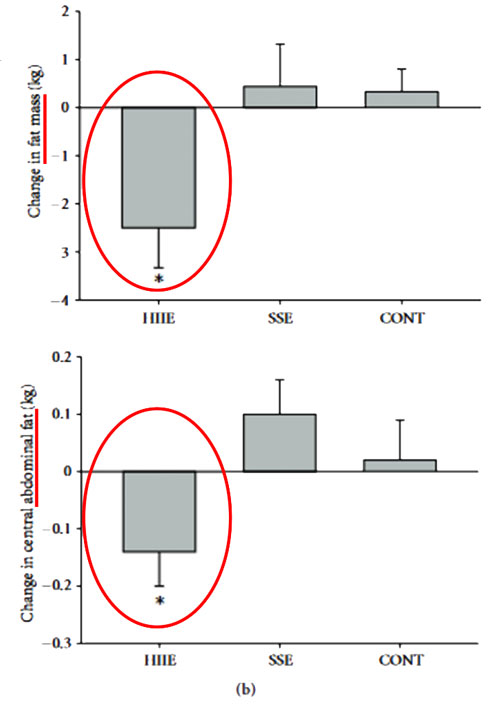
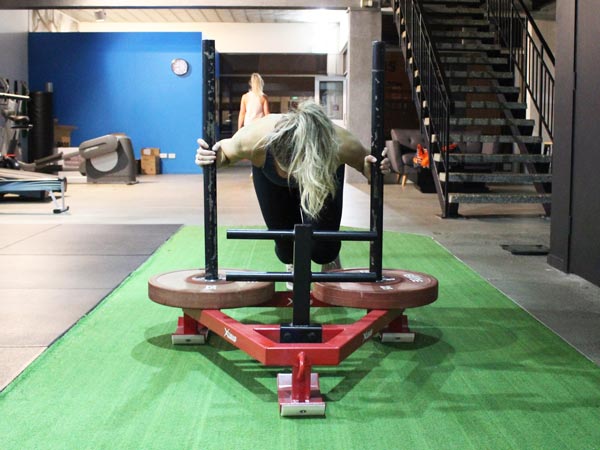





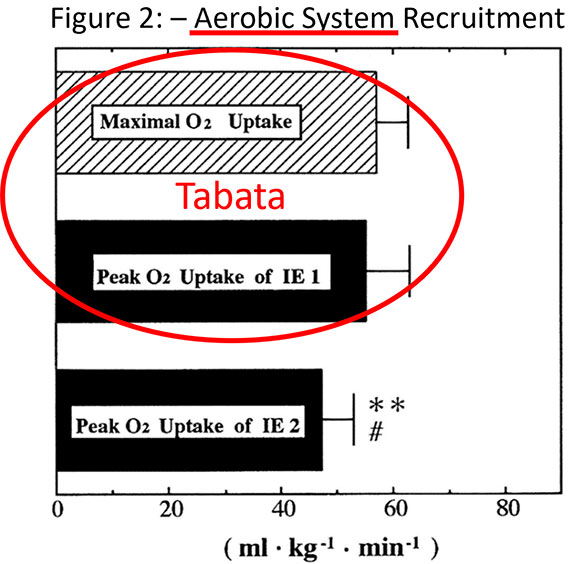
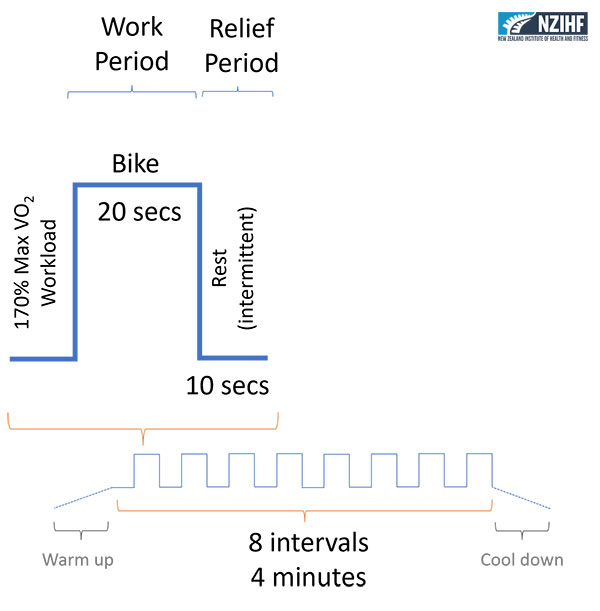
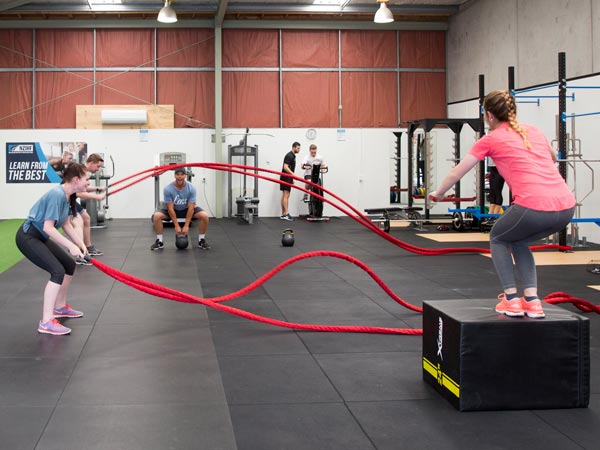



I enjoyed this article and found a few things out so you can never stop learning. Thank you for having me on the mailing list.
I used to keep very fit for rugby with what was, essentially, 3 x HIIT per week during the actual playing season. This was mainly done with medium to heavy kettlebells. My off-season training was traditional weight training and some sprint work.
This was 40 years ago and I was taught Kettlebell training by a good Army PTI while I was in the military. I eventually became a battalion PTI myself.
These days I almost exclusively do HIIT as the body is a bit broken and can’t take the big weight work very well. I still consider myself fit, although a lot leaner than decades past 😂
Hi Mark. Glad you enjoyed the article! Sounds like you’ve been using HIIT to good effect for a long time. It’s a great option I think and certainly can be kind on the joints with some careful selection, and cruel at the same time!
Thanks for the article, I would disagree on “Tabata is a very targeted protocol and can only be achieved safely on a bike.” – What about rowing?
Hi Ulf,
I encourage you to consider what happens to technique under maximal fatigue of both anaerobic and aerobic systems. Assuming you’ve been set up correctly, technique on a stationary bike is simple; there’s very little that can go wrong. Conversely, rowing is complex, it’s a full body technique with distinct phases; the catch, drive, release and recovery. It takes time to develop a safe and effective rowing technique whereas almost anyone can pedal safely and effectively on a stationary bike.
Under conditions of maximal fatigue which is the objective of tabata, you expect technique to deteriorate as fatigue sets in, so you need to consider the consequences of pushing poor technique. Very little can go wrong on a stationary bike. Pushing fatigue with a tired, compromised rowing technique is fraught with problems and the risk of injury. When you’re fatigued, it’s hard, if not impossible to focus on correct technique no matter how many prompts you receive. And correct, safe technique isn’t the primary objective of tabata…fatigue is.